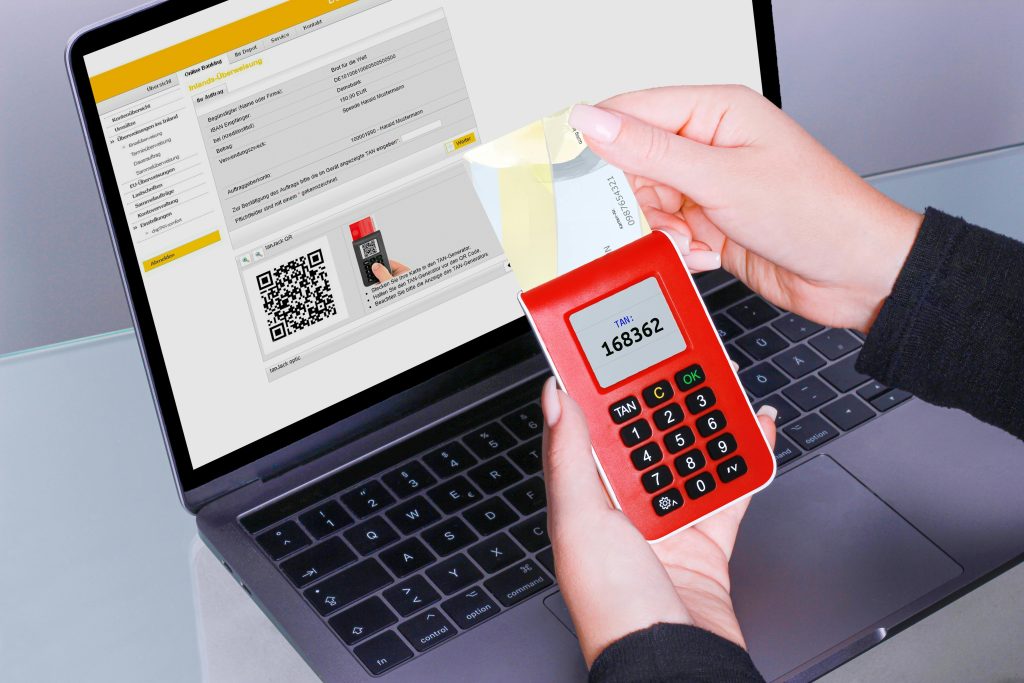Introduction
In a fast‑moving market, owners of investment or asset portfolios can no longer afford to rely on stale, end‑of‑day reports. Real‑time portfolio snapshots deliver up‑to‑the‑second visibility into holdings, performance, and risk—enabling swift, informed decisions that protect capital and seize opportunities. Whether you oversee public equities, fixed income, real estate, crypto, or a hybrid mix, a robust real‑time solution integrates live data feeds, secure account connections, and intuitive dashboards or mobile apps.
This guide walks you through every step—data sources, aggregation, visualization, alerting, security, and best practices—to build or adopt a real‑time portfolio snapshot system. You’ll gain clear, actionable insights into the technology stack, user experience patterns, and operational workflows that empower owners to monitor and manage their portfolios with confidence, accuracy, and agility.

Understanding Real‑Time Portfolio Snapshots
Why “Real‑Time” Matters
- Immediate Decision‑Making: Markets can shift in seconds. A real‑time view lets you rebalance, hedge, or exit positions the moment news breaks.
- Risk Management: Spot drawdowns or concentration risks as they happen, not hours later.
- Performance Attribution: Track P/L fluctuations intraday to understand the impact of events, news, or algorithmic strategies.
- Improved Transparency: Owners, advisors, and stakeholders share a single source of truth, reducing miscommunication.
Levels of Freshness
- True Real‑Time (Milliseconds to Seconds):
Critical for high‑frequency trading, automated hedging, or algorithmic rebalancing. - Near Real‑Time (Seconds to Minutes):
Suitable for wealth management dashboards where intraday quotes and trades are displayed. - Periodic Refresh (Hourly to Daily):
Acceptable for less liquid assets (real estate valuations, private equity NAVs) with slower update cycles.
Core System Architecture
To deliver real‑time snapshots, your solution typically comprises five layers:
- Data Ingestion: Streaming or polling market data, trade confirmations, and account balances.
- Aggregation & Normalization: Merging disparate feeds into a unified data model—standardizing symbols, currencies, and position metadata.
- Storage & Caching: In‑memory stores (Redis) or time‑series databases (InfluxDB) for low‑latency reads.
- Delivery Mechanism: WebSockets, Server‑Sent Events, or smart polling to push updates to clients.
- Presentation Layer: Web dashboards, mobile apps, or embedded BI reports that render real‑time charts, tables, and alerts.
1. Data Ingestion: Connecting to Sources
1.1 Market Data Feeds
- Equities & ETFs: IEX Cloud, Alpha Vantage, Polygon.io, or premium feeds from Bloomberg/Refinitiv.
- Fixed Income & FX: ICE Data Services, Quandl, or OANDA for FX rates.
- Crypto Assets: CoinAPI, CryptoCompare, or exchange WebSocket APIs (e.g., Binance, Coinbase Pro).
- Real Estate: Zillow API for indices, local MLS feeds, or commercial providers like CoreLogic.
Best Practice: Use WebSocket streams for high‑volume, low‑latency price updates and RESTful fallbacks for less frequent queries (e.g., historical OHLC data).
1.2 Custodian & Brokerage Integrations
- RESTful APIs: TD Ameritrade, Interactive Brokers, DriveWealth, Alpaca—all expose endpoints for positions, balances, and trade statuses.
- OAuth2 Security: Standardize authentication and refresh tokens to maintain persistent, secure connections.
- Trade Webhooks: Some platforms push trade execution confirmations via webhooks for instant settlement updates.
1.3 Alternative & Private Asset Data
- Private Equity / Venture: Integrations with fundraising platforms or manual uploads for NAV updates.
- Real Assets: IoT sensor feeds for equipment usage or chain‑of‑custody data in commodities and logistics.

2. Aggregation & Normalization
2.1 Unified Data Schema
Define a canonical schema, for example:
| Field | Type | Description |
|---|---|---|
| accountId | String | Unique owner or account identifier |
| assetType | Enum | EQUITY, BOND, REIT, CRYPTO, etc. |
| symbol | String | Ticker or unique asset identifier |
| quantity | Number | Units held |
| marketPrice | Number | Latest price per unit |
| marketValue | Number | quantity × marketPrice |
| currency | String | ISO currency code (e.g., USD) |
| costBasis | Number | Original investment value |
| unrealizedPnl | Number | marketValue – costBasis |
| timestamp | DateTime | Last update time |
2.2 Currency Conversion & Consolidation
- Fetch live FX rates and apply to non‑base‑currency assets.
- Round values to consistent precision and recalculate portfolio totals.
2.3 Metadata Enrichment
- Sector & Industry Tags: For equities, pull from classification APIs (IEX, MSCI).
- Risk Scores: Integrate third‑party risk metrics (Volatility, Beta).
- Custom Labels: Owner‑defined buckets (Book Value vs. Market Value).
3. Storage & Caching Strategy
3.1 In‑Memory Caches
- Redis / Memcached: Store the latest snapshot per account with sub‑second TTLs.
- Pub/Sub Channels: Publish deltas (e.g., price changes, trade events) to subscribed clients.
3.2 Time‑Series Databases
- InfluxDB / TimescaleDB: Retain a rolling window of historical snapshots for trend analysis and intraday charting.
- Downsampling Policies: Aggregate high‑frequency data into minute/hour buckets for older data to save space.

3.3 Persistence & Recovery
- Durable Storage: Persist raw feeds to object stores (S3) or a transactional database for auditability.
- Replay Mechanisms: Allow back‑fill or replay of data streams in case of outages.
4. Real‑Time Delivery Mechanisms
4.1 WebSockets
- Establish a persistent connection for full‑duplex communication.
- Use libraries like Socket.io, ws, or uWebSockets for scalable servers.
javascriptCopyEdit// Node.js + ws example
const WebSocket = require('ws');
const wss = new WebSocket.Server({ port: 8080 });
wss.on('connection', (ws, req) => {
const accountId = authenticate(req);
ws.send(JSON.stringify(getInitialSnapshot(accountId)));
redisSubscriber.subscribe(`portfolio:${accountId}`);
redisSubscriber.on('message', (_, message) => {
ws.send(message);
});
ws.on('close', () => {
redisSubscriber.unsubscribe(`portfolio:${accountId}`);
});
});
4.2 Server‑Sent Events (SSE)
- Unidirectional stream from server to client—simpler fallback if WebSockets aren’t required.
- Use for dashboard widgets that only need updates (no client→server RPC).
4.3 Smart Polling
- For lower‑traffic or mobile scenarios, poll every 15–60 seconds.
- Adjust frequency dynamically based on market volatility or user activity.
5. Presentation Layer: Dashboards & Mobile Apps
5.1 Web Dashboard Patterns
- Allocation Pie Chart: Realtime slice sizes reflect market value changes.
- P/L Time‑Series Graph: Intraday mark‑to‑market curve with hover tooltips.
- Holdings Table: Sortable by performance, weight, or risk metrics.
- Alerts Panel: Real‑time notifications of threshold breaches or trades.

Technology: React/Vue + D3.js or charting libraries like Recharts or Highcharts.
5.2 Mobile App Design
- Offline First: Cache last snapshot in local storage; show “stale time” indicator.
- Push Notifications: Immediate alerts for owner‑defined triggers via APNS or FCM.
- Gesture‑Friendly Charts: Swipe to change timeframes; pinch to zoom.
Technology: React Native, Flutter, or native Swift/Kotlin.
5.3 Embedded BI Reporting
- Power BI / Tableau / Looker: DirectQuery or live mode connections to your database.
- Embed via iFrame or SDK, secured by embed tokens and row‑level security.
6. Alerting, Notification & Automated Actions
6.1 Threshold‑Based Alerts
Owners configure rules such as:
- P/L Triggers: Notify when unrealized P/L exceeds ±X%.
- Allocation Drift: Alert if asset class deviates from target by >Y%.
- Transaction Confirmations: Push notifications when large trades settle.
6.2 Anomaly Detection
- Unsupervised machine‑learning models to identify outlier price moves, suspicious trade patterns, or datafeed gaps.
- Trigger email/SMS/Slack alerts with contextual information and links to dashboards.
6.3 Automated Remediations
- Pre‑Set Rules: Auto‑rebalance small drifts within thresholds.
- Webhook Integrations: Fire orders or send instructions to trading systems when conditions meet criteria (e.g., stop‑loss triggers).
7. Security, Governance & Compliance
7.1 Authentication & Authorization
- OAuth2 / OpenID Connect: Standard protocols for user identity.
- Role‑Based Access Control (RBAC): Owners vs. advisors vs. viewers.
7.2 Encryption & Data Protection
- TLS Everywhere: Secure sockets for all client and API traffic.
- Encryption at Rest: AES‑256 for databases and object storage.
- Audit Logging: Record every data fetch, user login, and configuration change for compliance.
7.3 Regulatory Considerations
- Data Residency: Ensure market data and personal data reside in compliant jurisdictions.
- Privacy: Adhere to GDPR, CCPA for personal and transactional data.
- Financial Regulations: MiFID II, SEC reporting for trade data if you’re a registered advisor.
8. Best Practices & Operational Tips
- Graceful Degradation: Show “last updated” timestamp and fallback data when real‑time feed is disrupted.
- Delta vs. Full Payloads: Send only changed values (deltas) to minimize bandwidth and UI thrashing.
- User Customization: Allow owners to define watchlists, custom metrics, and personalized layouts.
- Testing & Monitoring:
- Synthetic tests to simulate datafeed latency and failover.
- Prometheus/Grafana for service health and message throughput SLOs.
- Scalability:
- Stateless aggregation services behind load balancers.
- Shared Redis/NSQ streams for pub/sub across server clusters.

Conclusion
Delivering real‑time portfolio snapshots for owners demands a well‑architected blend of live data integration, efficient aggregation, push‑based delivery, and secure, intuitive presentation. By following this end‑to‑end blueprint—from connecting to market and custody APIs, to normalizing and caching data, to streaming updates via WebSockets, and finally visualizing them in dashboards or mobile apps—you’ll empower portfolio owners with the timely insights they need to navigate volatility, manage risk, and capitalize on opportunities. Implement robust alerting, enforce strong security and compliance standards, and invest in scalable infrastructure to ensure your solution remains resilient and performant as your portfolios—and their owners’ expectations—grow.




